
Manila Post Office: A Neoclassical Gem on the Pasig River
The Manila Post Office, officially known as the Manila Central Post Office, is a distinguished example of neoclassical architecture, originally designed by Juan M. Arellano,
Santa Cruz, located on the right bank of the Pasig River, is a lively and historically rich district in Manila. It acts as a gateway to neighboring areas such as Quiapo, Ermita, and Binondo. The area’s dynamic blend of cultural heritage and modern urban life offers a fascinating glimpse into Manila’s past and present. With bustling markets, vibrant street life, and a variety of local establishments, Santa Cruz is both a historical treasure and a modern hotspot.
The district’s unique character is shaped by its rich history and cultural diversity. Santa Cruz stands out for its blend of old-world charm and contemporary urban energy, making it a central point of interest for both locals and visitors.


Before the Spanish arrived, Santa Cruz was a mix of marshlands, green spaces, orchards, and rice fields. In 1581, a Spanish expedition claimed the land and allocated it to the Jesuits. The Jesuits established the first church in the area, which is now the Santa Cruz Parish, on June 20, 1619. By 1643, they had enshrined the image of Our Lady of The Pillar to cater to the predominantly Chinese residents, attracting many devotees.

On June 24, 1784, King Carlos III of Spain granted about 2 square kilometers of land from the Hacienda de Mayhaligue to the San Lazaro Hospital, which cared for lepers in Manila. A small park was later developed at the Santa Cruz Parish, linking it to the Spanish cavalry headquarters, previously the Colegio de San Ildefonso run by the Jesuits. The district also had a slaughterhouse, a meat market, and a Chinese cemetery to the north.


The Franciscans were later tasked with caring for the lepers, with Father Felix Huerta transforming the San Lazaro Hospital into a well-known refuge for the afflicted on the north side of the Pasig River.
During World War II, as the combined American and Filipino forces advanced from the north, Japanese troops, taken by surprise by the rapid approach of liberation, abandoned the northern banks of the Pasig River, including Santa Cruz, in 1945. As a result, Santa Cruz and much of northern Manila were spared from extensive artillery bombardment. Consequently, several pre-World War II buildings and houses have survived in Santa Cruz, offering a tangible connection to the past amidst the district’s evolving landscape.
The relatively unscathed condition of these structures provides a glimpse into the district’s historical architecture and urban development before and after the war.
Santa Cruz is home to several notable religious buildings that highlight the district’s diverse spiritual landscape. Apart from the Santa Cruz Church, the Archdiocesan Shrine of Espiritu Santo and the Bethel Knox United Methodist Church are prominent institutions in the area. Each of these buildings reflects the rich spiritual and cultural heritage of the district, contributing to its vibrant and varied religious life.
These churches and shrines not only serve as places of worship but also as landmarks that encapsulate the district’s historical and cultural evolution.
The Santa Cruz Church, originally established by the Jesuits in the early 1600s, has seen numerous repairs and reconstructions over the centuries. The most recent major renovation took place in the 1950s. Today, the church showcases a California Spanish Mission-style facade, which is complemented by Filipino Baroque ornamentation. This fusion of styles reflects the church’s Asian-Hispanic blend.
The church’s facade is topped with an effigy of Our Lady of the Pillar, the church’s patroness. The feast of Our Lady of the Pillar is celebrated on the third Sunday of October and on October 12 each year, marking an important event in the local religious calendar.

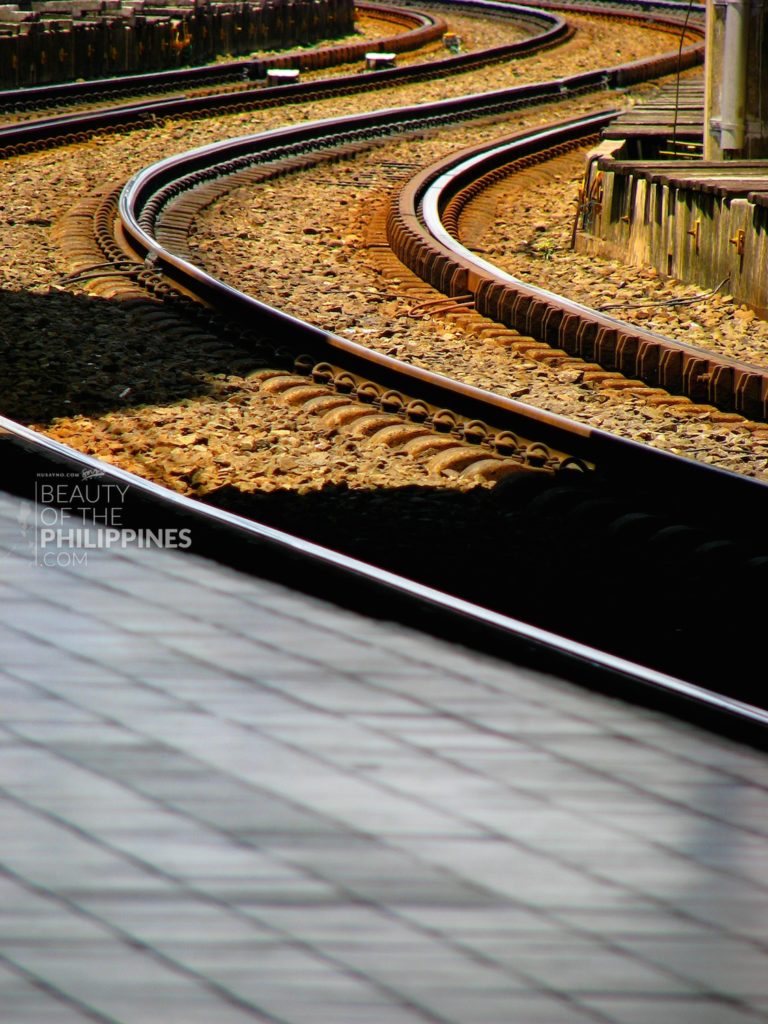
The northern section of Santa Cruz is known for housing some of Manila’s oldest and most significant cemeteries. These include La Loma Cemetery, which is shared with Caloocan, the Manila Chinese Cemetery, and the Manila North Cemetery, the city’s largest. These cemeteries are important historical sites, each with its own unique stories and contributions to the city’s rich cultural tapestry.
The presence of these cemeteries underscores Santa Cruz’s role as a historical and cultural hub, reflecting both the diversity and depth of its past.
Santa Cruz features several prominent landmarks that contribute to its distinctive character. Plaza Santa Cruz, marking the entrance to Manila’s historic Chinatown, and the Third Welcome Gate, or Arch of Goodwill, which leads toward Ongpin Street and Binondo, are notable examples. The district also includes a range of government offices, museums, and universities, enhancing its vibrant atmosphere.
Plaza Lacson is particularly noteworthy for its neoclassical architecture from the pre-World War II era, showcasing the district’s historical architectural style and offering a glimpse into its architectural heritage.
RELATED STORIES

The Manila Post Office, officially known as the Manila Central Post Office, is a distinguished example of neoclassical architecture, originally designed by Juan M. Arellano,

It is the home of the popular Asian elephant, Mali, as well as 90 other species. As well as being a landmark in Manila, the

As the nation’s first ever world-class marine theme park, Manila Ocean Park is located in Ermita Manila, within the Philippines’ largest urban resort/aqua-themed hotel complex

As one of the oldest cemeteries in Manila, Campo Santo De La Loma, commonly referred to as the La Loma Cemetery, is one of the

Historically, Avenida Rizal, now Rizal Avenue, was the social heart of Manila, teeming with restaurants and entertainment venues. Although the district has evolved, it still embodies a lively spirit through its bustling markets and diverse street vendors. This blend of traditional and modern businesses keeps the area dynamic and relevant in today’s urban landscape.
The enduring vibrancy of Santa Cruz highlights its ability to adapt while preserving its historical and cultural essence.

Santa Cruz’s central location makes it a key point for exploring both the historical and contemporary aspects of Manila. The district’s rich cultural heritage, combined with its vibrant street life and modern developments, offers a unique reflection of Manila’s dynamic evolution. The area continues to be a significant cultural and commercial hub within the city.
The ongoing blend of historical significance with modern vibrancy ensures that Santa Cruz remains a fascinating destination for both residents and visitors.




Rizal Avenue serves as the main thoroughfare in Santa Cruz, linking various parts of the district and contributing to its vibrant street life. The area is well-connected through several key roads, including Recto Avenue, Tayuman Street, and Blumentritt Road. Public transportation further enhances accessibility, with the LRT Line 1 stations at Carriedo, Doroteo Jose, Bambang, Tayuman, and Blumentritt situated within the district. Additionally, the Philippine National Railways operates a station in Blumentritt.
For those using jeepneys, routes from Baclaran, Pasay, Valenzuela, Novaliches, and Caloocan pass through Rizal Avenue, providing convenient access to and from Santa Cruz. This extensive network of transportation options ensures that the district remains well-connected and accessible.
I’m looking forward to the stories and images leaving a lasting positive impression on you, just as they have on me. Stay connected with us on social media for a weekly exploration of travel assignments and breathtaking visuals. Our focus is on championing local tourism, showcasing small businesses, and honoring the magnificence of the Philippines through the content we curate. Join us in spreading the word by clicking the ‘share’ buttons below. Your support means the world to us.
EXPLORE MORE about
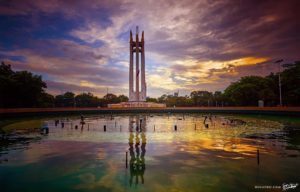
One of Quezon City’s main parks is the Quezon Memorial Circle, which is located in Quezon City and is surrounded by an elliptical road, making

As one of the oldest cemeteries in Manila, Campo Santo De La Loma, commonly referred to as the La Loma Cemetery, is one of the

Known as one of the most important baroque churches in the Philippines and as one of the only four baroque churches in the Philippines that

It is always a surprise for buildings, parks and houses to survive such wars as it is almost inevitable that everything will be brought down

It is the home of the popular Asian elephant, Mali, as well as 90 other species. As well as being a landmark in Manila, the

Explore the vibrant tapestry of Manila through its four national museums, each a unique gem in the city’s cultural crown. These four distinguished establishments are

Plaza Miranda is a public square bounded by Quezon Boulevard, Hidalgo Street and Evangelista Street in Quiapo, Manila. It is the plaza which fronts the

Located along Roxas Boulevard, Manila and adjacent to the century-old walled city of Intramuros, the Luneta National Park, or “Luneta” as many refer to it,
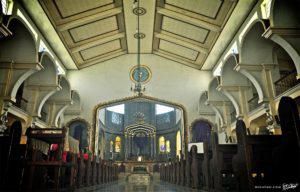
The Polo Church, formally known as the San Diego de Alcala Church, resides in the Polo neighborhood of Valenzuela, Manila. This church has a captivating

The Andres Bonifacio Birthplace Monument in Tutuban, Divisoria stands as a powerful symbol of Filipino patriotism and a tribute to the courage and leadership of Andres

San Sebastian Church is a Roman Catholic Minor Basilica located in Quiapo, Manila. It’s also known as Minor Basilica of San Sebastian or San Sebastian

The San Agustin Museum is located adjacent to the UNESCO World Heritage Site, San Agustin Church. It is located in Intramuros—the walled city of Manila—and

Casa Manila is a living museum that features the lifestyle of a wealthy Filipino family living during the last years of the Spanish colonial period,

The Cultural Center of the Philippines or CCP was founded in 1966 under the directive of former President Ferdinand Marcos, in order to reinforce and
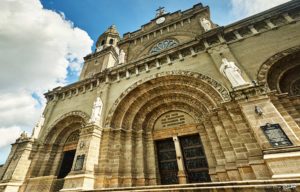
Originally built in 1880, the Manila Cathedral is the current version of the longstanding Church of Manila. It is a masterpiece of architecture that was

The Manila Post Office, officially known as the Manila Central Post Office, is a distinguished example of neoclassical architecture, originally designed by Juan M. Arellano,

UST, also known as the University of Santo Tomas, is a private Roman Catholic university located in Sampaloc, Manila. It was founded on 28 April

It is considered to be one of the world’s great harbors, the Manila Bay, and it serves as the Port of Manila, Philippines. Having once

The Padre Pio Chapel, also known as the St. Pio of Pietrelcina Chapel, holds a special place in my heart as a photographer. It revealed

The Philippine International Convention Center (PICC) stands as a monument to the Philippines’ ambition to be a key player on the global stage. With its

As the nation’s first ever world-class marine theme park, Manila Ocean Park is located in Ermita Manila, within the Philippines’ largest urban resort/aqua-themed hotel complex

The newly restored Jones Bridge is easily recognizable by its beautifully designed black lamp posts—the same ones that were there when the bridge was first

In addition to being considered the oldest Chinatown in the world, Binondo Chinatown is also the center of trade and commerce in Manila City. In

It is also known as the Walled City, and during the Spanish Colonial Period it was synonymous with the city of Manila. Intramuros was also

Located in the heart of the Taguig City, the Venice Grand Canal is a lifestyle mall development under the Megaworld Lifestyle Malls Located inside the

The Binondo Church is a historic church in Manila, located in the District of Binondo, near the Plaza San Lorenzo Ruiz. It was previously called
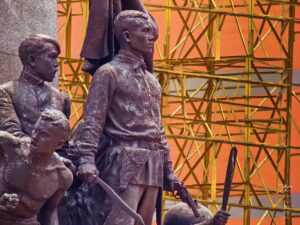
The Bonifacio Monument, also called Bonifacio Monumento or Monumento, proudly stands in Caloocan City, Metro Manila. It is a powerful symbol created by the National

The Manila Abbey San Beda, or formally known as Abbey of Our Lady of Montserrat, is a Benedictine men’s monastery located along the streets of

Manila American Cemetery and Memorial is located in the heart of Taguig City on the lands of Fort Bonifacio and serves as the largest grave
BROWSE BY CATEGORIES